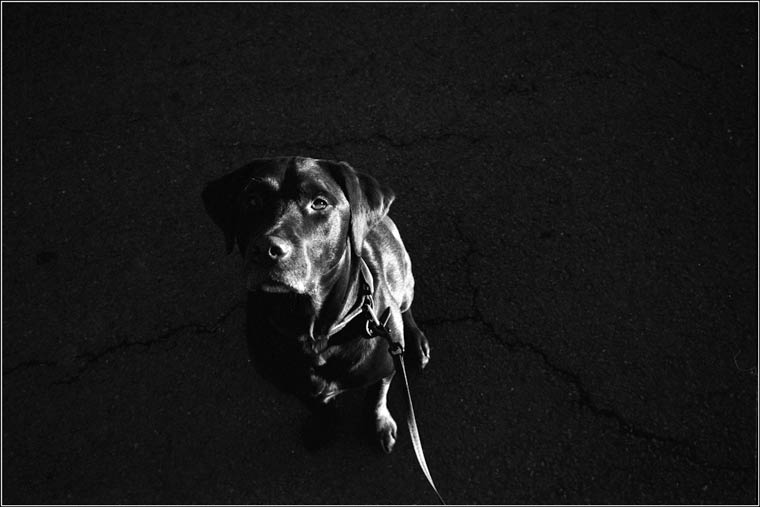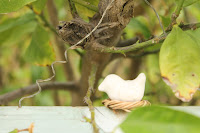The photo that I took above is a landscape that shows depth through putting a subject in the foreground. When I took this picture, I got really close to the bush in front of me so that I could get a close-up of it along with the sun flare. I think anybody who views this picture would agree that the sun flare accentuates the bush which makes the foreground look ten times better than the background. The subject matter in the foreground sticks out the most and makes this photo unique compared to other photographs that I've taken before.
Monday, December 3, 2012
Unit 5 Activity 4
The two photos that I took here both show open and closed landscapes. The photo that I took at the very top would be considered an open landscape while the photo that I took underneath would be considered a closed landscape. When I look at the open landscape I can see everything that can be seen in this landscape. There is nothing in the way that would obstruct or distract my view of the beautiful landscape that's in the photo. But when I look at the closed landscape I can only see part of the landscape. The building is obstructing my view of the landscape that's basically hiding behind the building. I honestly prefer open landscapes when compared to closed landscapes.
Unit 5 Activity 3
 |
| Photo by Anonymous |
Wednesday, November 28, 2012
Unit 5 Activity 2
 |
| Photo by Anonymous |
 |
| Photo by Kenn Reay
Both of the photos above depict landscape photography that also contain messages. The message in the first photograph would have to be a very somber message. It shows how cold and depressing it looks outside in the country of Japan. The photographer probably was trying to depict emotion in this photograph. In the photo below it, the photographer probably was trying to depict the significance of religion in a certain place. The cross gives away the fact that the picture is definitely trying to convey that message of religion.The second picture portrays more of a message when compared to the first picture.
|
Thursday, November 8, 2012
Unit 5 Activity 1
| Photo by Walker Evans
In this photo I can see a graveyard and a steel mill in the background using objective analysis. While using subjective analysis, I can see that this photograph is portraying what life was like in the 1930's. Walker Evans made this photo very effective because it's not just a picture of landscape but it shows how depressing the times were back then. It can definitely be considered art because art is a form of expressing oneself's emotion so this picture could possibly show the emotions of a photographer during the 1930's. Also, it's considered art because it's a photograph that portrays a story or event.
|
Friday, October 26, 2012
Unit 4 Activity 5
The pictures above are the four pictures that I took that contain both solid and fluid forms. They show the different shutter speeds that I used depending on the way the subjects look.
Unit 4 Activity 4
Photo by Chas Elliot
The photographer that took this picture used a slow shutter speed because the background is blurred but the foreground is clear. Some difficulties while taking this picture could've been accidentally making the foreground blurry but the photographer definitely was able to accomplish the right shutter speed that he was going for.
Unit 4 Activity 3
These are the four photos that I took that display photographs taken using a faster than 1/250 shutter speed. There is no blur in these photos and I focused in very clearly on the main subject which was the flag. I tried really hard to make it so that there is no blur in the pictures.
These four photos are the photos that I took that display shutter speeds between 1/15 and 1/125. I panned the camera to be able to take these pictures and so the movement of the panning made the visual effect look better. These photos also didn't turn out blurry because of the shutter speeds.
Sunday, October 21, 2012
Unit 4 Activity 2
Photo by Kyle May
The photograph above was taken using a fast shutter speed. The photographer used a fast shutter speed to capture all of the glass pieces from the light bulb breaking apart. While taking this picture, the photographer could have had problems with trying to keep the picture from turning out blurry. He could have held the camera very still to take the picture or he most likely used a tripod so that the picture wouldn't turn out blurry. This photo definitely shows great depth of field because of the subject in the photograph. It also gives you a feeling a movement because the glass pieces are flying up into the air.
Thursday, October 18, 2012
Unit 4 Activity 1
Photo by Henry Cartier-Bressen
This photograph here was one of the many unique photographs taken by the professional photographer Henry Cartier-Bressen. I chose this one to put on my blog because it shows the "decisive moment" very well. The man is standing in front of two lines of trees which helps to add composition such as leading lines in the photo. The trees behind the man add quality to the photo because it makes it more interesting and unique.
Monday, September 24, 2012
Unit 3 Activity 4
 |
| Photo by Unknown |
 |
| Photo by Eunice Orantes |
 |
| Photo by Unknown |
 |
For the photo in the top left corner, the photographer that took this picture had to of used a small aperture to achieve that great depth of field that's shown. Using great depth of field in that picture was perfect because it makes the audience look at both the wood in the foreground and the wood in the background. Now in the photo below it, the photographer did the exact same thing. When the audience sees this photo, they will not look at just one clear shoe, but both of the clear shoes. In the photographs on the right, the aperture was made large in order to achieve the shallow depth of field. I think shallow depth of field is more interesting to look at because the subject is seen more clearly and defined.
Monday, September 17, 2012
Unit 3 Activity 3
 |
| Photo by Gabriela Mester |
Friday, September 14, 2012
Unit 3 Activity 2
Find an example of a photograph where the subject has been lit by a single light source and an example where more than one light has been used.
Describe in each the quality and position of the brightest or main light and the effect this has on the subject. In the second example describe the quality and effect the additional light has.
 |
| Photo by Dan Newton |
Tuesday, September 11, 2012
Unit 3 Activity 1
The photos containing soft light show smooth textures and also display a lot of details. They both make the moods of the photos much livelier and happier. Although, the photos that portray dark light show rougher textures and little detail. Those pictures aren't as lively as the photos with soft light are.
 |
| Photo by Kurt Budliger |
 |
| Photo by Yvette Inufio |
 |
| Photo by Emory |
 |
| Photo by Pleasantview Photos |
Thursday, August 16, 2012
Unit 2 Activity 4
 |
| Photo by unknown |
 |
| Photo by Klaus Neuner |
Balance in Photography Imbalance in Photography
The photographers of these two pictures probably intended to balance them with the subjects. The picture on the left is balanced because the chair is off to the left and the window is off to the right. The picture on the right is imbalanced because the flower is basically in the center which isn't a correctly balanced picture.

The pictures that I took on the left are imbalanced photos because the subjects are off center and have nothing else surrounding them. The pictures that I took on the right are balanced photos because the subjects are off center but the backgrounds compliment the foregrounds so they work.

The pictures that I took on the left are imbalanced photos because the subjects are off center and have nothing else surrounding them. The pictures that I took on the right are balanced photos because the subjects are off center but the backgrounds compliment the foregrounds so they work.
Wednesday, August 15, 2012
Unit 2 Activity 3
Rule of Thirds Not Rule of Thirds
The pictures on the left definitely show rule of thirds while the pictures on the right don't show rule of thirds. The subjects in the two pictures on the left are aligned correctly for the rule of thirds technique. But the subjects in the pictures on the right aren't aligned correctly because they are more centered so they don't show the rule of thirds technique.
Tuesday, August 14, 2012
Unit 2 Activity 1
Photo by Craig Jones
Photo by Busser Philippe
These two photos both show how the photographer got up close to the animals and focused only on the animals and not the backgrounds. The picture of the bear was taken farther back when compared to the picture of the lynx. Both backgrounds are simple and not distracting whatsoever from the focal point. The focal points in the pictures are the bear and the lynx. These photos fill the frame and show the significance of the subjects.
Subscribe to:
Comments (Atom)





























